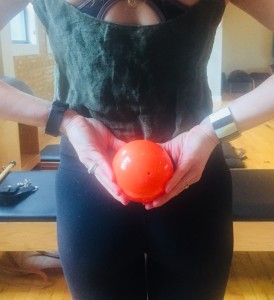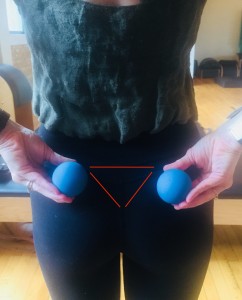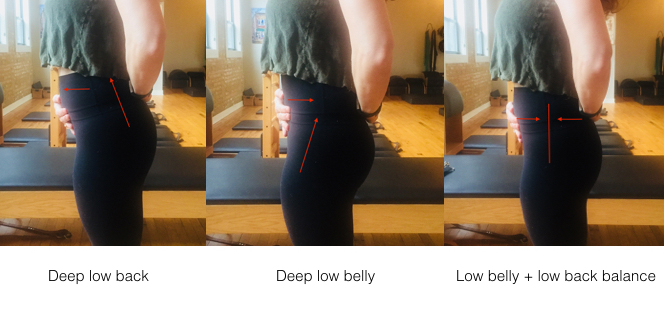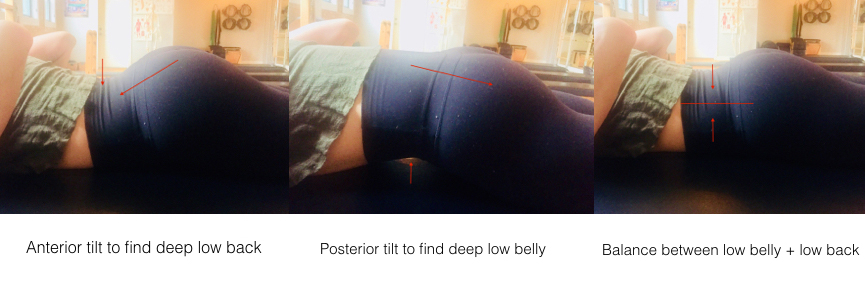Fearless Swan – Is It Possible? Part 1: Fearless Extension – An Upside-Down Approach
By Chantill Lopez
As I discussed in my previous article (“A Question of Potential”), there’s no moment more susceptible to holding our students to a very low ceiling of potential than when we’re tackling extension. Great teaching often comes down to being okay with our students’ discomfort, holding them very tenderly, and stepping back from needing to be the one that “does” Pilates to them.
Here’s where we can start to shift – both in our approach to teaching and in teaching extension.
First, a reframing is in order.
One, it’s not your job to determine what someone else’s body’s potential is. Your job (as I see it and have experienced it over the years) is to offer your students as many tools as possible so that they can DISCOVER their own potential. Assuming the body’s greatest potential is about opening the gates of opportunity. When we’re teaching something difficult, whether it’s choreographically complex like Boomerang or physically challenging like Rocking Swan, consider how your teaching could benefit from assuming your student can and will eventually get there.
Two, keeping someone safe is not ONLY your responsibility. As teachers, we can support our students in becoming more aware of their edges, their stopping points, and decide when and how they want to push themselves in any given moment.
A new way of teaching extension.
Organize. Prepare rather than protect.
Promoting functional and intrinsic strength in the spine — particularly in the lumbar region and especially for those bodies with pain, discomfort or previous injury — is not only critical, it’s TOTALLY POSSIBLE to do from the very first session or class.
Part of what eludes students and teachers over time is why after weeks, months, and maybe even years of practicing swan (or extension in any form), it’s still so difficult to achieve without low back pain/discomfort.
Debunking the tuck as preparation for extension.
If your key organizational tool for extension is to draw the pelvis into a posterior tilt (tucking) and the lumbar spine into flexion (fostered by “navel to spine, press the pubic bone down and other similar cues), you might be missing the point. What you’re doing over time is teaching the body to keep the deep extensors (we’ll focus on the multifidus) passive and to have the abdominals do the work.
Unfortunately, the abdominals can’t extend the spine. They can only prevent it from overextending. Using this approach is like putting your kid in a life vest, throwing them into the water, and trying to teach them to swim without EVER taking the life vest off. Ridiculous!
Prepare the sacrum, pelvis and spine by releasing and hydrating the tissue.
Set the spine up for success by increasing its inherent ability to recruit the deep stabilizing extensors (mulitifidus) and promote balanced, healthy movement in the SI joints. When we can move the sacrum within the pelvis efficiently, which does NOT mean promoting a lot of movement but rather appropriate and even movement, it’s like turning on the lights before walking into a dark room. It starts the ripple effect of muscle recruitment up the spine that is necessary for happy and deliciously full spinal extension.
 Franklin ball sacral release: with arch/curl
Franklin ball sacral release: with arch/curl
- Place the ball under the sacrum in a relatively “neutral” position.
- Inhale until the pelvis rocks anteriorly. Exhale until the pelvis rocks posteriorly.
TIP: Allow the breath to motivate your pelvis and spine into action.
The goal is to release the lower portion of the thoracolumbar fascia and begin to create healthy communication in the SI joints and surrounding region.
 Racquetball release/mobilization: with knee sways and sit bone reaches
Racquetball release/mobilization: with knee sways and sit bone reaches
- Place one on each side of the sacrum to start, although you can move the placement down along SI joints toward the tailbone. .
- Reach the sitting bones forward, alternating. Knee sway. Rest. Move the balls up an inch. Repeat.
It can be beneficial to work all the way up along the QL’s.
Initiate. Lift off rather than anchor down.
Create awareness of and strength in front and back support equally.
“Low belly, low back.” That’s what I tell my students as they prepare for any kind of extension including Swan. Optimal spine (language we can use to replace the static “neutral pelvis”) looks a little different in every position, but it can feel the same no matter where you are and what you’re about to do.
Consider that instead of aligning the bones to determine optimal spine, accessing a balance in muscle support can better serve the development of efficient movement. Because everyone’s optimal spine LOOKS different — given the body, its history, the day, what they ate, how much sleep they got — placing the bones in a predetermined place is like expecting a buoy to always be in the same place no matter how high the tide.
Determining optimal spine by touch and feel – standing
My favorite way to teach folks how to find optimal spine is to have them stand perpendicular to a mirror, one hand on their low belly the other hand (often palm face out) on their sacrum or just above. Looking in the mirror, have them feel for muscle activation (this is called VET, visual enhancement of touch, a brain-based learning technique), as they move between anterior and posterior tipping. We want them to feel and sense the toning in the low belly (with anterior tilt) and low back (with posterior tilt) equally. This often takes lots of practice in a variety of positions, but standing is a great place to start.
Whatever language you use (tilt/tuck, arch/curl, 6 o’clock/12 o’clock) begin to cultivate awareness of front-to-back support. This is the root of our ability to extend.
Preparing for Swan.

- Lying prone, legs a bit wider than hip width, forearms down, prepare to lift by first finding the balance in effort between your low belly and low back. Here’s what I say:“Stick your butt out. Yep, tail in the air, crease in the front of the hips. Feel your low back activate? Great. Now, draw your low belly in just enough so that the effort feels balanced in front and back. (Alternate: Now, draw your hip bones narrow in the front until you feel a little lift in the low belly.) Good? Okay, check in, glutes relaxed? Yes. Legs relaxed? Yes.”

From that moment, everything is possible.
It matters not how high we get, but that we’re able to find the deepest kind of strength so the back ACTUALLY gets stronger intrinsically over time.
Stay tuned for our final installment of Fearless Swan in Part 2: When Swans Fly – Getting Higher Than You Thought You Could.
 Chantill Lopez – “Be real. Don’t fake it. Be able to say I don’t know. Laugh at myself. Extend compassion to myself and my students. Enter in fully, every time, ready or not.”
Chantill Lopez – “Be real. Don’t fake it. Be able to say I don’t know. Laugh at myself. Extend compassion to myself and my students. Enter in fully, every time, ready or not.”
After more than 20 years of teaching, 17 of which have been spent teaching Pilates, yoga, dance, meditation and other movement modalities to a complex variety of folks, Chantill’s passion is teaching teachers.
She holds Pilates certifications from the PhysicalMind Institute and Body Kinetics with Master Teacher Carol Appel, is a certified Vinyasa yoga teacher, and has extensively studied the work of Philip Beach, Yamuna Body Rolling, Feldenkrais, the Franklin Method, Authentic Movement, and the Halprin Life/Art Process, as well as Vipasana meditation, Buddhist psychology and The Work by Byran Katie. Chantill’s work currently explores brain-based learning and teaching, motivational strategies, and the integration of the whole-person based on such ideas as somatic and humanistic psychology and the polyvagal theory by Stephen Porges.
She is a Pilates Method Alliance Certified Pilates Teacher (CPT), a Balanced Body Pilates faculty member and the founder of the international education company, Skillful Teaching. Chantill is also the creator of the Thinking Pilates Podcast and author of the book “Moving Beyond Technique,” and the co-creator of the Science + Psychology of Teaching Master’s Program.
You can find Chantill teaching throughout the U.S. and offering online coursework and support to teachers around the world. She actively teaches out of several studios in the Northern California & Bay Area including Sonoma and Napa counties, Sacramento and San Francisco.

